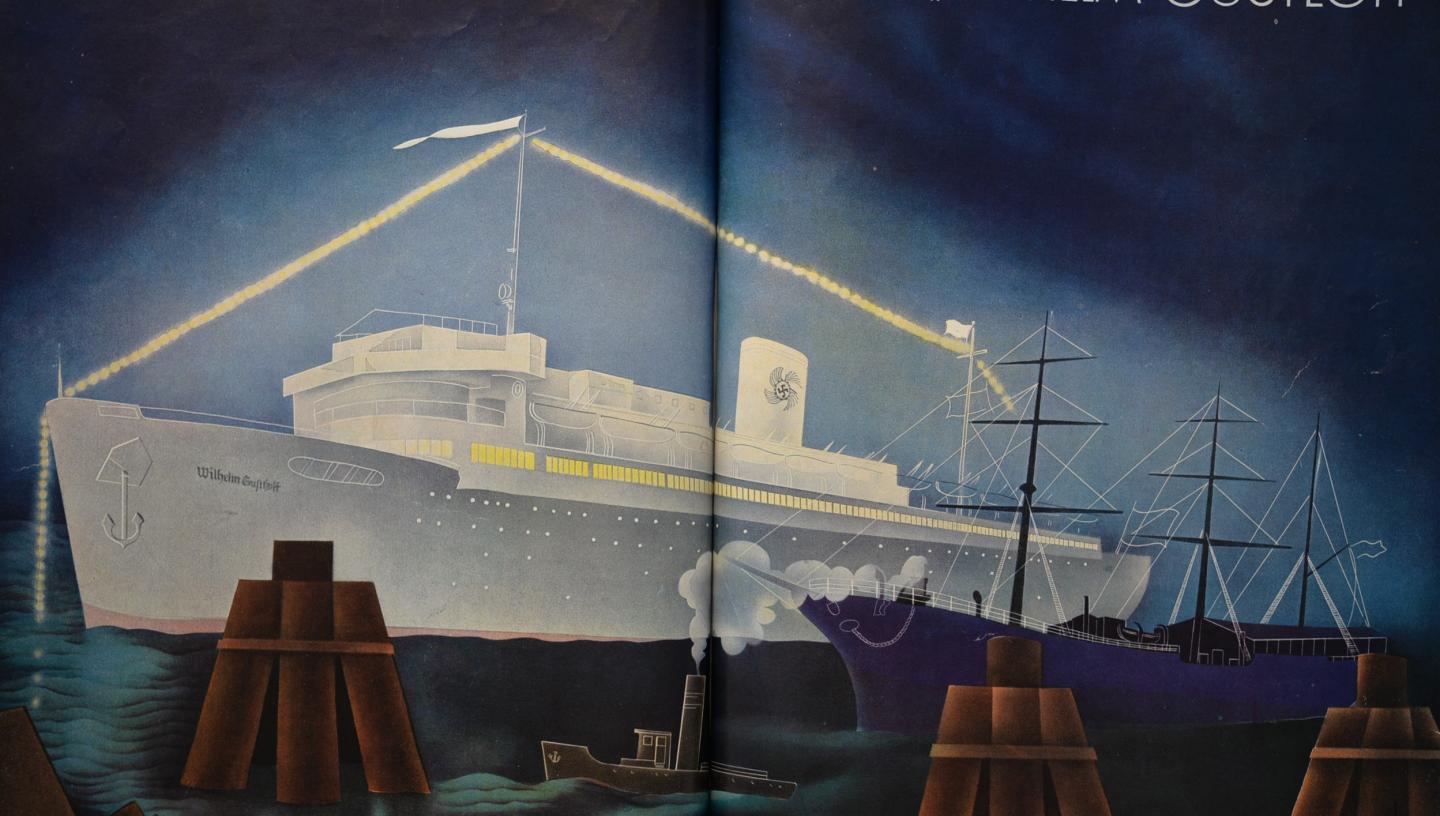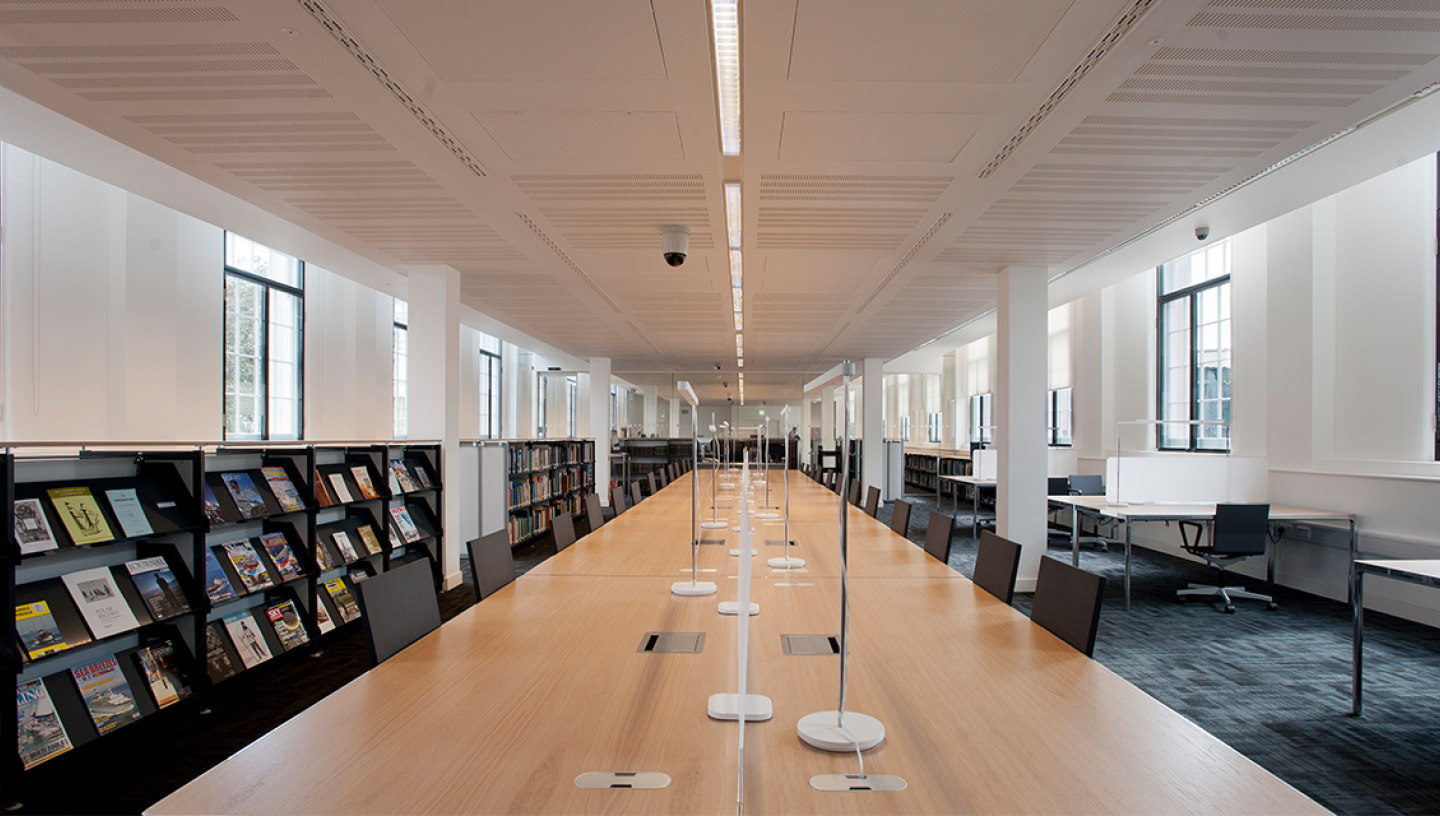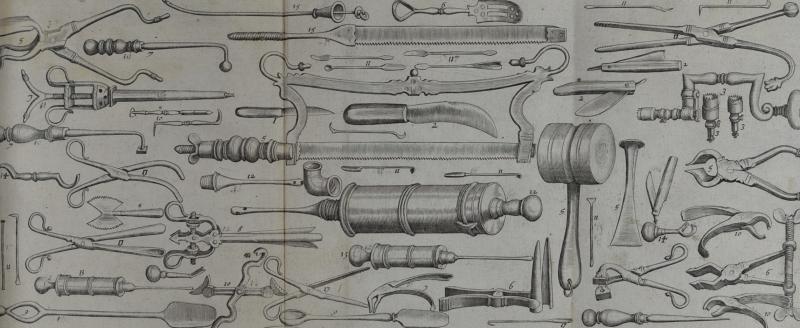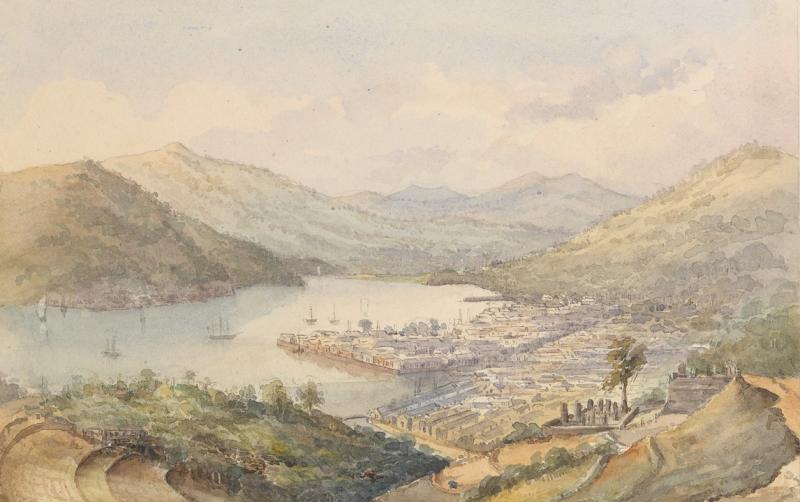
This month we investigate an Archive and Library oversize pamphlet (PBB9342) entitled Freude und Arbeit (Joy and Work) dated 1938, Germany.
Within this publication is a feature article entitled: ‘Diplomatenempfang an Bord des Wilhelm Gustloff’ (‘diplomatic reception on board the Wilhelm Gustloff’). The event took place in the port of Lisbon, Portugal, posed as a social event which included a gathering of German and foreign dignitaries and their wives.
From the photographs it appears the Germans were entertaining representatives of various nations.
At the bottom of the page, an annotation by an unknown hand notes:
This ship was torpedoed by a Russian submarine with the loss of 5000 lives. 800 survivors. This was and remains the largest loss of life ever known at sea. She left Gdynia January 29 1945 for a port in Denmark, approximately 25000 tons. Those lost were refugees from Russian land forces advancing through Poland in Prussia.
The Wilhelm Gustloff was one of the first cruise ships built for the Nazi organization Kraft durch Freude (KdF – Strength through Joy). Construction was undertaken at the Blohm and Voss shipyard in Hamburg, and the ship was launched in May 1937, with a displacement of just over 25,000 tons.
The name of the ship was intended to be Adolf Hitler, however, following the assassination of Wilhelm Gustloff, a prominent Nazi based in Switzerland, by a 25-year-old student in February 1936, the decision was taken to name the ship Wilhelm Gustloff.
The Wilhelm Gustloff came into service for the KdF to offer subsidized trips and cruises to German workers, who, while placated, were not totally committed to the new regime. The KdF organization was part of the German Labour Front (DAF) which replaced the trade unions after their abolition.
The most enterprising project undertaken by the DAF and KdF was the Volkswagen (people’s car) to enable ordinary workers to own a vehicle which could be used on the newly constructed autobahns. Following the outbreak of the Second World War in 1939, the Volkswagen project was suspended as manufacturing was diverted to war materials.
By September 1939, the Wilhelm Gustloff was adapted to a floating hospital and barracks and remained in dock for the next four years.
By early January 1945 the Soviet armies were advancing through Germany and stories of atrocities carried out by the Red Army abounded, which caused fear and panic in the civilian population. The Nazi Party played on this fear in the belief it would strengthen German resistance.
Operation Hannibal
On 23 January 1945 the German Navy launched Operation Hannibal, a naval evacuation of civilians and others in the path of the Soviets. Every available ship was pressed into service, and the Wilhelm Gustloff was to play a role in the evacuation despite not being operational for some years. While the evacuation commenced from the ports of East Prussia, the Wilhelm Gustloff was docked at Gotenhafen (now Gdynia, Poland).
The Wilhelm Gustloff left Gotenhafen on January 30, laden with a mixture of wounded soldiers, Nazi officials, remnants of army units and a large contingent of civilian refugees. Many of the latter boarded the Wilhelm Gustloff unofficially in their panic to escape, seeking what they hoped to be a safe haven.
Although the ship was designed to carry just under 1900 passengers, it became severely overloaded during the evacuation. Estimates vary regarding the number of people aboard, but it is believed they were in the region of over 8000 souls, with half of them being children.
After departure, when the Wilhelm Gustloff was barely twelve miles offshore, just after 9 pm, three torpedoes were fired from the S13, a Soviet submarine. A final torpedo, failing to leave its tube, had to be quickly disarmed by the crew.
In the struggle to survive, most passengers died from exposure, some died fighting for a spot on the ship’s lifeboats or were crushed in the stampede and panic. Suicides also occurred as some individuals preferred a bullet to the icy water of the Baltic. Survivors in the lifeboats opened fire on swimmers when they attempted to climb in, fearing the lifeboats might sink due to overcrowding.
The Wilhelm Gustloff sank into the Baltic sea in just under an hour after the first torpedo had struck the ship. The death toll was approximately 9000, which made this sinking the most significant single maritime disaster in history.
After the sinking
The Russian submarine S13 was commanded by Captain Alexander Marinesko, who was a competent and able submarine captain but suffered from an addiction problem which was to be his downfall. Prior to the Wilhelm Gustloff sinking, Marinesko was under threat of court martial. By late 1945, he was dishonourably discharged from the Soviet Navy and died in November 1963.
For many years afterwards, people outside Germany had no knowledge of the Wilhelm Gustloff disaster and this catastrophic event had simply become another tragic loss of the war.





